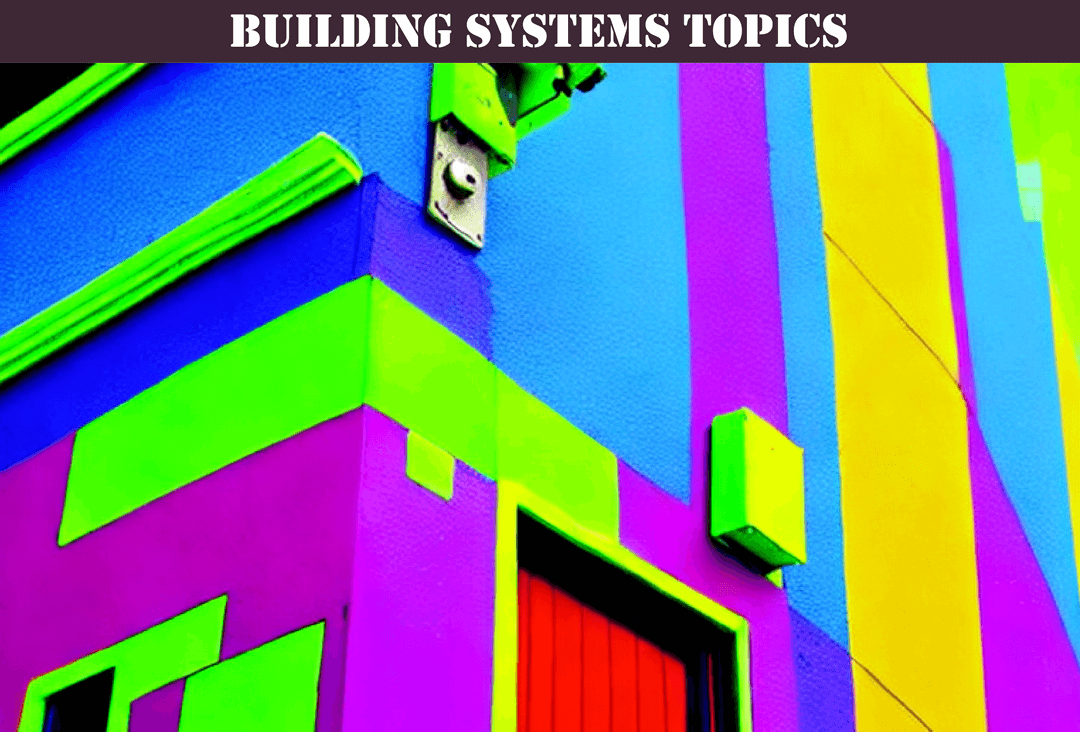Overview Of Building Systems 2025

Building systems are essential components of any structure, whether it is a commercial building or a residential property. They are designed to ensure that the building is functional, safe, and comfortable for its occupants. Building systems encompass a wide range of technologies and applications, including HVAC systems, plumbing systems, electrical systems, fire protection systems, building automation systems, energy management systems, lighting control systems, and security systems.
The importance of building systems cannot be overstated. These systems are crucial for the smooth operation of a building, and they play a vital role in ensuring the safety and well-being of its occupants. For example, the HVAC system is responsible for regulating the temperature, humidity, and air quality within a building, which can have a significant impact on the health and productivity of its occupants.

1 Hour Consult $250
IT Glue Based Documentation
Concentrated 1 hour session of MSP documentation wisdom.
Count Me InBuilding systems have a long history, dating back to ancient times when buildings were designed with passive cooling and heating systems. Over the years, these systems have evolved, becoming more sophisticated and complex, incorporating new technologies and innovations. Today, building systems are highly integrated, with multiple systems working together to create a safe, comfortable, and energy-efficient environment for building occupants.
In North America, building systems are subject to a range of regulations and standards, which vary depending on the type of building and its intended use. For example, the National Fire Protection Association (NFPA) sets standards for fire protection systems, while the American Society of Heating, Refrigerating, and Air-Conditioning Engineers (ASHRAE) sets standards for HVAC systems. Building owners and operators must comply with these regulations to ensure that their buildings are safe and efficient.
In this essay, we will explore the fundamentals and basics of building systems, including their components, applications, and integration. We will examine the various types of building systems and their functions, as well as the challenges and opportunities associated with integrating these systems. We will also look at the emerging technologies in building systems and their implications for the future of building design and construction.
Fundamentals of Building Systems
Building systems are the backbone of any structure, and they are responsible for providing the basic necessities required for a safe and comfortable living or working environment. There are four primary building systems: HVAC, plumbing, electrical, and fire protection systems.
HVAC System
The HVAC (heating, ventilation, and air conditioning) system is one of the most critical building systems, responsible for regulating the temperature, humidity, and air quality within a building. HVAC systems are designed to provide a comfortable environment for occupants, while also ensuring that the air is free of pollutants and other harmful substances.
In North America, the most common types of HVAC systems include central heating and air conditioning systems, heat pumps, and geothermal systems. These systems typically consist of a furnace or air handler, ductwork, and a thermostat. The furnace or air handler heats or cools the air, which is then distributed throughout the building via the ductwork.
There are several challenges associated with HVAC systems, including energy efficiency and indoor air quality. In recent years, there has been a growing focus on sustainable HVAC systems that reduce energy consumption and promote a healthier indoor environment.
Plumbing System
The plumbing system is another essential building system, responsible for providing clean water for drinking, bathing, and other household needs, as well as for removing wastewater from the building. Plumbing systems typically include pipes, valves, fixtures, and appliances such as sinks, toilets, and showers.
In North America, plumbing systems are subject to a range of regulations and standards, including the Uniform Plumbing Code (UPC) and the International Plumbing Code (IPC). These codes ensure that plumbing systems are safe and efficient, and they cover everything from the design and installation of plumbing systems to the materials used in their construction.
One of the primary challenges associated with plumbing systems is the potential for leaks and other types of damage. To address this issue, modern plumbing systems are designed with a range of safety features, such as shut-off valves and leak detection sensors.
Electrical System
The electrical system is responsible for providing power to a building, including lighting, appliances, and other electrical devices. Electrical systems typically include a power source, such as the main electrical grid, as well as a range of distribution equipment, such as circuit breakers, fuses, and transformers.
In North America, electrical systems are subject to a range of regulations and standards, including the National Electrical Code (NEC) and the International Building Code (IBC). These codes ensure that electrical systems are safe and efficient, and they cover everything from the design and installation of electrical systems to the types of materials used in their construction.
One of the primary challenges associated with electrical systems is energy efficiency. In recent years, there has been a growing focus on sustainable electrical systems, including the use of renewable energy sources such as solar and wind power.
Fire Protection System
The fire protection system is designed to prevent, detect, and suppress fires within a building. Fire protection systems typically include fire alarms, sprinklers, fire extinguishers, and other safety equipment.

1 Hour Consult $250
IT Glue Based Documentation
Get On The AI Documentation Superhighway Today.
FASTPASS HEREIn North America, fire protection systems are subject to a range of regulations and standards, including the National Fire Protection Association (NFPA) codes and standards. These codes ensure that fire protection systems are safe and effective, and they cover everything from the design and installation of fire protection systems to the types of materials used in their construction.
One of the primary challenges associated with fire protection systems is the potential for false alarms. To address this issue, modern fire protection systems are designed with a range of safety features, such as smoke detectors that are less sensitive to minor fluctuations in air quality.
he Role of IT Departments and Managed Service Providers in Building Systems
As building systems become more high tech, the role of IT departments and managed service providers (MSPs) in managing these systems is becoming increasingly important. With the rise of smart buildings, IoT devices, and other advanced technologies, building systems are becoming more complex and interconnected than ever before.
IT departments and MSPs are responsible for managing and maintaining the IT infrastructure that supports building systems, including the servers, networks, and software applications that enable these systems to function. They are also responsible for ensuring that building systems are secure, reliable, and compliant with a range of industry standards and regulations.
One of the primary challenges associated with managing building systems is the need for real-time monitoring and analysis. With so many different systems and devices interconnected within a building, it can be difficult to identify and address issues before they cause significant problems. IT departments and MSPs are increasingly relying on advanced monitoring and analytics tools to help them identify and address issues quickly and efficiently.
Another key area where IT departments and MSPs are playing an increasingly important role is in the integration of building systems with other IT systems and applications. For example, building systems may need to be integrated with HR systems to manage employee access to different areas of a building, or with accounting systems to track utility usage and expenses.
As the Internet of Things (IoT) continues to grow and expand, the role of IT departments and MSPs in managing building systems is likely to become even more important. With the proliferation of smart devices and sensors, building systems are becoming more interconnected and more reliant on IT infrastructure to function effectively.
In the United States, the demand for IT professionals with expertise in building systems is on the rise. According to the Bureau of Labor Statistics, employment of computer and information technology occupations is projected to grow 11 percent from 2019 to 2029, much faster than the average for all occupations. This growth is expected to be driven by the increasing reliance on technology in virtually every industry, including building systems.
In conclusion, the role of IT departments and MSPs in managing building systems is becoming increasingly important as these systems become more high tech and complex. With the rise of smart buildings and IoT devices, IT professionals with expertise in building systems will be in high demand, both in North America and around the world. As technology continues to evolve, it is clear that the future of building systems will be closely intertwined with the world of IT.
Conclusion
In conclusion, building systems are a critical component of modern infrastructure, providing essential services such as heating, cooling, lighting, and security. As technology continues to evolve, building systems are becoming more high tech and interconnected, and the role of IT departments and managed service providers (MSPs) in managing these systems is becoming increasingly important.
IT departments and MSPs are responsible for managing the IT infrastructure that supports building systems, ensuring that they are secure, reliable, and compliant with industry standards and regulations. They are also responsible for real-time monitoring and analysis, as well as the integration of building systems with other IT systems and applications.
The demand for IT professionals with expertise in building systems is on the rise, and is expected to continue to grow in the coming years. As technology continues to evolve, the role of IT departments and MSPs in managing building systems will become even more important, as these systems become more complex and interconnected.
In conclusion, IT departments and MSPs play a critical role in ensuring the smooth operation and functionality of building systems. As technology continues to evolve and shape the future of building systems, it is clear that the importance of IT professionals with expertise in this area will only continue to grow. Building owners and operators must recognize the value of investing in IT infrastructure and expertise in order to ensure the safe, efficient, and reliable operation of their building systems.
FAQ
Q: What are building systems?
A: Building systems are the various subsystems within a building that provide essential services such as heating, cooling, ventilation, lighting, plumbing, and security.
Q: Why are building systems important?
A: Building systems are critical to the efficient and safe operation of modern buildings. They provide essential services that ensure the comfort, health, and safety of occupants, as well as the functionality and longevity of the building itself.
Q: What is the role of IT departments and MSPs in managing building systems?
A: IT departments and MSPs are responsible for managing the IT infrastructure that supports building systems. They ensure that the systems are secure, reliable, and compliant with industry standards and regulations. They also monitor and analyze the systems in real-time and integrate them with other IT systems and applications.
Q: What are the benefits of investing in IT infrastructure and expertise for building systems?
A: Investing in IT infrastructure and expertise can improve the efficiency and effectiveness of building systems, reduce maintenance costs, and improve occupant comfort and safety. It can also ensure compliance with industry standards and regulations, reduce downtime and system failures, and provide valuable data and analytics for better decision-making.
Q: What are some of the latest trends in building systems technology?

1 Hour Consult $250
IT Glue Based Strategies
A Professional MSP Differentiates Themselves From The Pack Via A Logical & Trustworthy Documentation Framework.
FASTPASS HEREA: Some of the latest trends in building systems technology include the use of IoT sensors and devices for real-time monitoring and analysis, the integration of building systems with other IT systems and applications, and the use of AI and machine learning algorithms for predictive maintenance and energy management.